In today’s era of rapid technological advancement, flexible printed circuit board manufacturers (PCBs) play a crucial role. They differ from traditional PCB boards by offering unique bendability, as seen in flexible PCB and electronic flex technologies, providing remarkable flexibility. From smartphones to medical devices, from automotive electronics to wearable technology, FPCBs are ubiquitous. They not only make electronic devices thinner and more portable but also enhance their reliability and durability. Gekun’s flexible printed circuit boards lead the industry with their exceptional quality.
1. Definition and Features of Flexible Printed Circuit Boards
1.1 Understanding Flexible Printed Circuit Boards
Flexible printed circuit boards (FPCBs) represent a significant innovation in the electronics field. Unlike traditional rigid circuit boards, they possess bendable and foldable characteristics. These circuit boards are made from thin, flexible substrates with conductive traces laid out through printing techniques. They function as the “flexible emissaries” of the electronic world, accommodating complex shapes and spatial requirements. For example, in compact smart devices, FPCBs can be seamlessly integrated into internal structures to achieve efficient circuit connections.
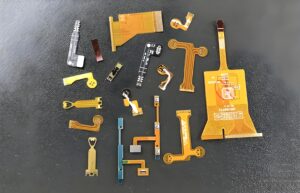
1.2 Flexible PCBs: A Unique Treasure in Electronics
Bendability: This is the most prominent feature. Unlike rigid PCBs, flexible PCBs can bend, fold, and even twist according to application needs, significantly expanding the design space for electronic devices. This capability is crucial in emerging electronic products such as wearable devices and foldable phones.
Extremely Thin: Compared to traditional rigid PCBs, flexible PCBs can be made very thin, reducing the weight of electronic devices and the overall size, making products more portable and compact.
High Reliability: Due to the use of specialized materials and manufacturing processes, flexible PCBs can operate stably under various harsh environmental conditions. They maintain good circuit performance even in high-temperature, high-humidity, or vibration-prone environments, ensuring reliable device operation.
Flexible Manufacturing Process: They can be customized according to different design requirements to meet the needs of complex electronic systems. As technology advances, flexible PCBs also see improvements in performance, such as enhanced conductivity and better insulation.
Good Heat Dissipation: Due to their unique structural design, flexible PCBs can effectively dissipate heat generated by electronic components, reducing the risk of device failure due to overheating.
Excellent Signal Transmission: They ensure stable transmission of high-speed signals, meeting the demands for high-speed data transfer in modern electronic devices.
2. Manufacturing Process of Flexible Printed Circuit Boards
2.1 Selection of Raw Materials
The quality of flexible printed circuit boards largely depends on the choice of raw materials(Flexible Printed Circuit Raw Materials). Common materials used in the production of flexible printed circuit boards include:
Substrates
Polyimide (PI): Known for its excellent high-temperature resistance, mechanical properties, and electrical insulation. It maintains stability in high-temperature environments and offers exceptional bendability, making it one of the commonly used substrates in flexible printed circuit boards.
Polyester (PET): Relatively inexpensive, with good flexibility and electrical performance. However, its high-temperature resistance is not as high as that of polyimide.
Liquid Crystal Polymer (LCP): Exhibits very low dielectric constant and dielectric loss, suitable for high-frequency applications. It also has high heat resistance and mechanical strength.
Conductive Materials
Copper Foil: The most commonly used conductive material in flexible printed circuit boards. Available in various thicknesses to meet different circuit design requirements.
Conductive Ink: Used in specific applications, such as low-cost, large-area flexible circuits. It can form conductive patterns through printing.
Adhesives
Used to bond different layers of materials together. Common adhesives include acrylates and epoxy resins. Choosing the right adhesive involves considering factors like bonding strength, heat resistance, and chemical resistance.
Among the numerous raw materials, Gekun’s flexible printed circuit boards utilize high-quality polyimide substrates and premium copper foil. The high-temperature resistance of polyimide allows Gekun’s FPCBs to perform stably in various harsh environments, while high-quality copper foil ensures excellent conductivity, supporting the efficient operation of electronic devices. Additionally, Gekun strictly controls material selection to meet high-quality standards and provide reliable, high-performance flexible printed circuit board products.
2.2 Detailed Process of Flexible PCB Manufacturing
As a renowned brand in the industry, Gekun ensures the highest quality in every manufacturing step of flexible printed circuit boards.

Design and Planning
The manufacturing process begins with meticulous design and planning. Engineers accurately layout the circuit, determining key parameters such as layer count, trace width and spacing, and connection points according to the specific needs of the electronic device. At this stage, careful consideration is given to the bendability of the flexible circuit board in various application scenarios to avoid placing overly thin traces or densely packed components in easily bent areas, ensuring smooth manufacturing and product reliability.
Substrate Selection and Preparation
Substrate Selection: Gekun selects high-quality substrates such as polyimide (PI) and polyester (PET), known for their excellent flexibility, insulation properties, and high-temperature resistance, meeting the requirements of various complex electronic devices.
Cleaning: The substrates are rigorously cleaned to remove impurities, dust, and contaminants, laying a solid foundation for subsequent process steps.
Copper Foil Processing
Copper Foil Lamination: Advanced lamination technology is used to securely bond high-quality copper foil to the substrate, ensuring a tight adhesion for good conductivity.
Etching Process: High-precision etching technology removes unwanted copper foil parts, precisely forming the circuit pattern. Gekun controls etching parameters strictly to ensure circuit accuracy and quality.
Drilling and Copper Plating
Drilling: Precise drilling is performed on the flexible printed circuit board according to design specifications. These holes are used for component installation or interlayer connections. Gekun uses advanced drilling equipment to ensure accurate hole positioning and consistent diameters.
Copper Plating: The drilled holes are copper-plated to enhance the conductivity of the hole walls. Stringent control of the plating process ensures excellent electrical connection performance.
Cover Film Lamination
Cover Film Selection: Suitable cover film materials, typically made from polyimide or polyester, are chosen for their excellent insulation and protective properties.
Hot Press Lamination: Precision hot press equipment is used to firmly bond the cover film to the flexible printed circuit board. Gekun controls the temperature, pressure, and time during lamination to ensure no bubbles or wrinkles, providing reliable protection.
Surface Treatment
Surface Treatment Options: To improve solderability and corrosion resistance, Gekun offers various surface treatments such as gold plating, tin plating, and chemical nickel-gold plating. The choice of surface treatment is based on customer needs and application scenarios.
Strict Quality Control: During surface treatment, Gekun conducts rigorous quality checks to ensure uniformity and stability of the surface treatment.
Testing and Inspection
Electrical Testing: Comprehensive electrical testing is performed on finished flexible printed circuit boards to check parameters like circuit continuity, resistance, and capacitance against design requirements. Advanced testing equipment and techniques ensure reliable performance for each board.
Visual Inspection: Detailed visual inspection is carried out to check for defects such as scratches, stains, and bubbles on the board’s surface. Gekun maintains high standards for appearance quality, ensuring each board has a perfect finish.
Cutting and Shaping
Precision Cutting: High-precision cutting equipment is used to cut the flexible printed circuit boards according to the dimensions required by the electronic device, ensuring accurate dimensions and clean edges.
Shaping Process: For flexible printed circuit boards with special shapes, advanced shaping technologies such as stamping and laser cutting are employed. Gekun carefully controls shaping parameters to ensure the board’s shape meets design requirements.
Packaging and Shipping
Packaging: Flexible printed circuit boards are carefully packaged using anti-static materials and suitable packaging methods to protect them during transport and storage.
Shipping Inspection: A final rigorous inspection is conducted before shipping to ensure product quality meets customer requirements. Gekun provides high-quality flexible printed circuit board products with a high level of responsibility and professionalism.

Flexible circuit board production process
3. Applications of Flexible Printed Circuits
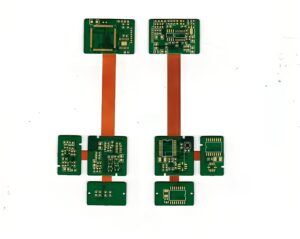
Applications in Electronic Devices
Firstly, in the field of smartphones, flexible printed circuits (FPCs) are extensively used. They can be cleverly integrated into the internal structure of the phone, allowing for highly integrated designs. Due to their flexibility, FPCs accommodate the trend towards slimmer smartphones, saving internal space. At the same time, FPCs can withstand various bends and vibrations experienced during daily use, ensuring stable and reliable circuitry. For example, the display ribbon cables and camera module connections in smartphones use FPCs, enabling the phone to maintain a sleek design while offering powerful functionality.
Secondly, tablets are another significant application area for FPCs. Similar to smartphones, tablets require a slim and portable design, which FPCs perfectly fulfill. They allow for complex circuit connections inside the tablet without adding thickness or weight to the device. Furthermore, the high reliability of FPCs ensures that tablets operate stably in various environments, providing a smooth user experience.
Thirdly, in wearable devices, FPCs demonstrate unique advantages. Wearable devices typically need to conform closely to the human body and withstand a certain degree of bending and stretching. The flexibility of FPCs allows them to adapt perfectly to the special shapes of wearable devices, providing stable circuit support. For example, the bands of smartwatches can integrate FPCs to enable various functions and controls. Additionally, the low power consumption of FPCs meets the battery life requirements of wearable devices.
4. Comparison with Traditional PCB Boards
4.1 Advantages and Disadvantages of Flexible PCBs
Advantages:
We have already discussed the advantages of Flexible PCBs, so here we will focus on their disadvantages.
Disadvantages:
Higher Cost: Compared to traditional PCB boards, the manufacturing process of flexible PCBs is more complex, and the material costs are higher, making them relatively expensive. This can limit their use in cost-sensitive applications.
Design Complexity: The flexibility of flexible PCBs requires designers to consider additional factors such as bending radius and stress distribution during the design process. This increases the technical demands on designers and adds to the design complexity and time.
Maintenance Difficulty: Repairing flexible PCBs can be challenging if they malfunction. Their complex structure and close integration with other components make them difficult to disassemble and replace individually.
4.2 Advantages and Disadvantages of PCB Boards
Advantages:
Lower Cost: The manufacturing process for traditional PCB boards is relatively mature and cost-effective. For large-scale production applications, such as consumer electronics, PCB boards meet cost-efficiency requirements.
Simplicity in Design: PCB boards are simpler to design, with designers able to use established design software and tools for circuit layout. For some simple electronic devices, PCB boards are a practical and economical choice.
Ease of Maintenance: If a PCB board fails, it is generally easier to repair. Faults can be addressed by replacing damaged components or re-soldering circuits, leading to lower repair costs.
Disadvantages:
Rigid Structure: PCB boards are rigid and cannot be bent or folded, limiting their use in applications with special shapes or confined spaces. For instance, traditional PCB boards cannot meet the design requirements of wearable devices and flexible displays.
Heavier Weight: Compared to flexible PCBs, PCB boards are typically heavier, which can increase the overall weight of electronic devices and affect portability.
Lower Reliability: In harsh working environments, such as high temperatures, high humidity, and strong vibrations, the reliability of PCB boards may be compromised. Their vibration and impact resistance are not as good as those of flexible PCBs.
4.3 Suitability Analysis in Different Scenarios
Consumer Electronics: In consumer electronics, such as smartphones, tablets, and laptops, flexible PCBs are often preferred for their compact and adaptable nature. However, for cost-sensitive consumer electronics, PCB boards might be a more economical choice.
Wearable Devices: Wearable devices require high flexibility and thinness in circuit boards, making flexible PCBs ideal. They can conform perfectly to the contours of the human body, offering a comfortable wearing experience. Traditional PCB boards, due to their rigid structure, are unsuitable for use in wearable devices.
Automotive Electronics: Automotive electronic devices need to operate reliably in harsh environments, thus requiring high reliability in circuit boards. Both flexible PCBs and PCB boards can be used in automotive electronics, depending on the specific application. For example, flexible PCBs might be necessary for limited-space applications like dashboards and central control systems, while PCB boards might be more suitable for cost-sensitive applications like engine control modules.
Aerospace Industry: Aerospace equipment demands high performance in terms of weight and reliability. The thinness and high reliability of flexible PCBs give them a significant advantage in the aerospace sector. However, due to their higher cost, PCB boards might be used in non-critical applications.
Both Flexible PCBs and PCB boards have their advantages and disadvantages and are suitable for different scenarios. Designers need to weigh factors such as cost, performance, reliability, and design complexity to choose the most appropriate type of circuit board for their specific application.
5. Electronic Flex: The Future of Flexible Printed Circuit Boards
Electronic Flex (electronic flexible technology) stands as one of the key innovations in the realm of flexible printed circuit boards (PCBs), revealing immense potential for future development. It not only opens new possibilities for the design and manufacture of electronic devices but also drives progress across the entire electronics industry.
5.1 Future Directions of Electronic Flex
Enhanced Flexibility and Foldability
With the rise of foldable electronics, the demand for greater flexibility and foldability in electronic flex will continue to grow. Future flexible printed circuit boards will be able to bend and fold at larger angles, potentially folding and unfolding like paper. This will create more room for innovative designs in electronic devices, such as foldable smartphones and tablets.
Thinner and Lighter
The trend towards lighter and thinner electronic devices is ongoing, and electronic flex plays a crucial role in achieving this goal. Future flexible printed circuit boards will become even thinner and lighter, further reducing the weight and volume of electronic devices. This will enhance portability and contribute to lower energy consumption.
Higher Integration
As electronic technology advances, the demand for higher circuit integration in electronic devices will increase. Future electronic flex will achieve higher integration levels by incorporating more electronic components onto the flexible printed circuit board. This will help reduce the size and weight of devices while improving performance and reliability.
Enhanced Functionality
Beyond traditional circuit connections, future electronic flex will offer more functionality. For instance, it could integrate sensors, wireless communication modules, and other components to enable smart sensing and wireless communication capabilities. This will support the development of smarter and more connected electronic devices.
Sustainability
With growing environmental awareness, sustainability will become a key focus in the future of the electronics industry. Future electronic flex will use more eco-friendly materials and manufacturing processes to minimize environmental impact. Additionally, it will support recyclability and reuse, enhancing resource efficiency.
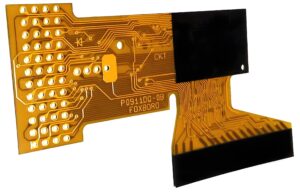
Flexible circuit board nanoscale applications
5.2 Impact of New Technologies on Flexible Printed Circuit Boards
Nanomaterial Technology
Nanomaterials possess unique physical and chemical properties, such as high strength, electrical conductivity, and thermal conductivity. Integrating nanomaterials into flexible printed circuit boards can enhance their performance and reliability. For example, using nanocopper conductive inks can achieve higher conductivity and better printability, while nanoceramic materials can improve heat resistance and insulation.
3D Printing Technology
3D printing technology enables rapid manufacturing of complex shapes, offering new possibilities for the design and production of flexible printed circuit boards. Future applications of 3D printing could produce more intricate flexible PCB structures, achieving higher integration levels and improved performance.
Artificial Intelligence
Artificial intelligence (AI) can revolutionize the design and manufacturing of flexible printed circuit boards through intelligent design and production. AI algorithms can optimize circuit board layouts and routing, enhancing performance and reliability. Additionally, AI can facilitate automated inspection and fault diagnosis, improving production efficiency and quality.
Quantum Computing
Quantum computing, with its powerful computational and parallel processing capabilities, is expected to play a significant role in the design and optimization of flexible printed circuit boards. Quantum computing could quickly solve complex circuit optimization problems, boosting PCB performance and reliability.
As a crucial technology in the field of flexible printed circuit boards, electronic flex holds significant promise for the future. With the continuous emergence and application of new technologies, electronic flex will continue to innovate and evolve, offering exciting possibilities for electronic device design and manufacturing. At the same time, it is essential to consider the environmental and societal impacts of these new technologies to achieve sustainable development goals.
6. Key Considerations for Choosing High-Quality Flexible Printed Circuit Boards
6.1 Performance Aspects
Flexibility: A high-quality flexible printed circuit board (FPCB) should offer excellent flexibility, maintaining reliable circuit performance even under various bending angles and degrees. This feature is crucial for wearable devices and foldable electronics. Flexibility can be assessed by reviewing product specifications or conducting practical tests.
Conductivity: Good conductivity is essential for the proper functioning of electronic devices. A quality FPCB should use high-grade conductive materials, such as copper foil, with uniform, smooth conductive pathways free of breaks or shorts. Conductivity can be tested by measuring resistance values.
Heat Resistance: During operation, FPCBs may be exposed to high temperatures. Therefore, a premium FPCB should have robust heat resistance to ensure stable performance under elevated temperatures. This can be assessed by checking the product’s heat resistance temperature range.
Signal Transmission: For electronic devices that require high-speed data transmission, signal transmission performance of the FPCB is critical. High-quality FPCBs should feature low signal loss and delay to ensure fast and accurate data transmission. Signal transmission characteristics such as frequency range and attenuation coefficient can be reviewed to evaluate this aspect.
6.2 Quality Aspects
Material Quality: The quality of a flexible printed circuit board heavily depends on the materials used. Premium FPCBs should be made from high-quality substrates, conductive materials, and protective films, all of which should exhibit excellent insulation, corrosion resistance, and abrasion resistance. Assessing the supplier’s material sources and quality control systems can provide insight into material quality.
Manufacturing Process: Advanced manufacturing techniques are crucial for ensuring the quality of FPCBs. High-quality products should involve precise printing, etching, drilling, and copper plating processes, with strict quality control throughout production. Evaluating the supplier’s production equipment, process workflows, and quality inspection reports can help assess manufacturing quality.
Appearance Quality: The appearance quality of FPCBs is also an important indicator. Quality FPCBs should have a smooth, flat surface without scratches, bubbles, or stains. The conductive pathways should be clear and orderly, free from breaks or shorts. Appearance can be evaluated through visual inspection and microscopic examination.
6.3 Pricing Considerations
Cost-Performance Ratio: When selecting an FPCB, it is important to consider not only the price but also performance and quality factors to choose products with a high cost-performance ratio. Comparing product prices and performance specifications from different suppliers can help evaluate cost-effectiveness.
Long-Term Costs: Beyond the initial purchase price, consider the long-term costs such as maintenance and replacement. While high-quality FPCBs may have a higher upfront cost, their stable performance and reliability may result in lower long-term costs. Assessing the product’s lifespan and maintenance requirements can help evaluate long-term costs.
6.4 Identifying Reliable Suppliers
Certification: Reliable suppliers should have relevant certifications, such as ISO9001 for quality management, ISO14001 for environmental management, and UL certification. These certifications indicate the supplier’s production management level and quality assurance capabilities.
Industry Reputation: Evaluating a supplier’s reputation within the industry can provide insight into their reliability. Consulting other clients, reviewing online feedback, and assessing the supplier’s product quality and service level can help gauge their reliability.
Technical Expertise: A reliable supplier should have strong technical capabilities, providing professional support and solutions. Understanding the supplier’s R&D capabilities, production equipment, and technical team can help assess their technical strength.
After-Sales Service: Good after-sales service is a key factor in choosing a reliable supplier. Understanding the supplier’s after-sales service policies, response times, and repair capabilities ensures that any product issues can be addressed promptly.
6.5 Recommended Supplier: Gekun
Gekun, a professional supplier of flexible printed circuit boards, offers several advantages:
Outstanding Performance: Gekun’s FPCBs utilize high-quality materials and advanced manufacturing processes, providing excellent flexibility, conductivity, heat resistance, and signal transmission performance, meeting the needs of various high-end electronic devices.
Strict Quality Control: Gekun implements a comprehensive quality control system, ensuring stable and reliable product quality through rigorous inspections at every stage, from material procurement to production.
Competitive Pricing: Gekun is committed to offering cost-effective products by optimizing production processes and reducing costs, ensuring competitive pricing.
Reliable Service: Gekun’s professional technical and after-sales service teams provide comprehensive support, ensuring customers have a worry-free experience with their products.
Choosing high-quality flexible printed circuit boards involves considering performance, quality, and price factors, as well as identifying reliable suppliers. Gekun, with its exceptional performance, strict quality control, competitive pricing, and reliable service, is a trustworthy choice for FPCB needs.
7 Flexible Printed Circuit Boards: Significant Advantages and Bright Future
Flexible printed circuit boards (PCBs) are becoming increasingly important in the electronics field due to their unique advantages.
Advantages of Flexible Printed Circuit Boards:
Exceptional Flexibility: FPCBs can adapt to various complex shapes and spatial requirements, offering significant design flexibility for electronic devices. Whether for wearable devices or foldable smartphones, FPCBs can perfectly conform to achieve sleek and stylish designs.
Lightweight and Thin: The lightweight and thin characteristics of FPCBs help reduce the overall weight of electronic devices, enhancing portability.
Good Heat Dissipation and Signal Transmission: FPCBs provide effective heat dissipation and signal transmission, ensuring stable operation of electronic devices.
Future Prospects:
The future of flexible printed circuit boards is promising. With ongoing advancements in wearable devices, smart home technologies, and automotive electronics, the demand for PCB will continue to grow. As technology progresses, the performance of FPCB will improve and costs will decrease, leading to broader applications.
In this era full of opportunities, we encourage users in relevant fields to actively apply flexible printed circuit boards. Engineers, designers, and manufacturers can leverage the advantages of PCB to create more innovative, efficient, and reliable electronic products. Let us work together to drive the growth of the PCB industry and bring more convenience and excitement to technological advancements and human life.

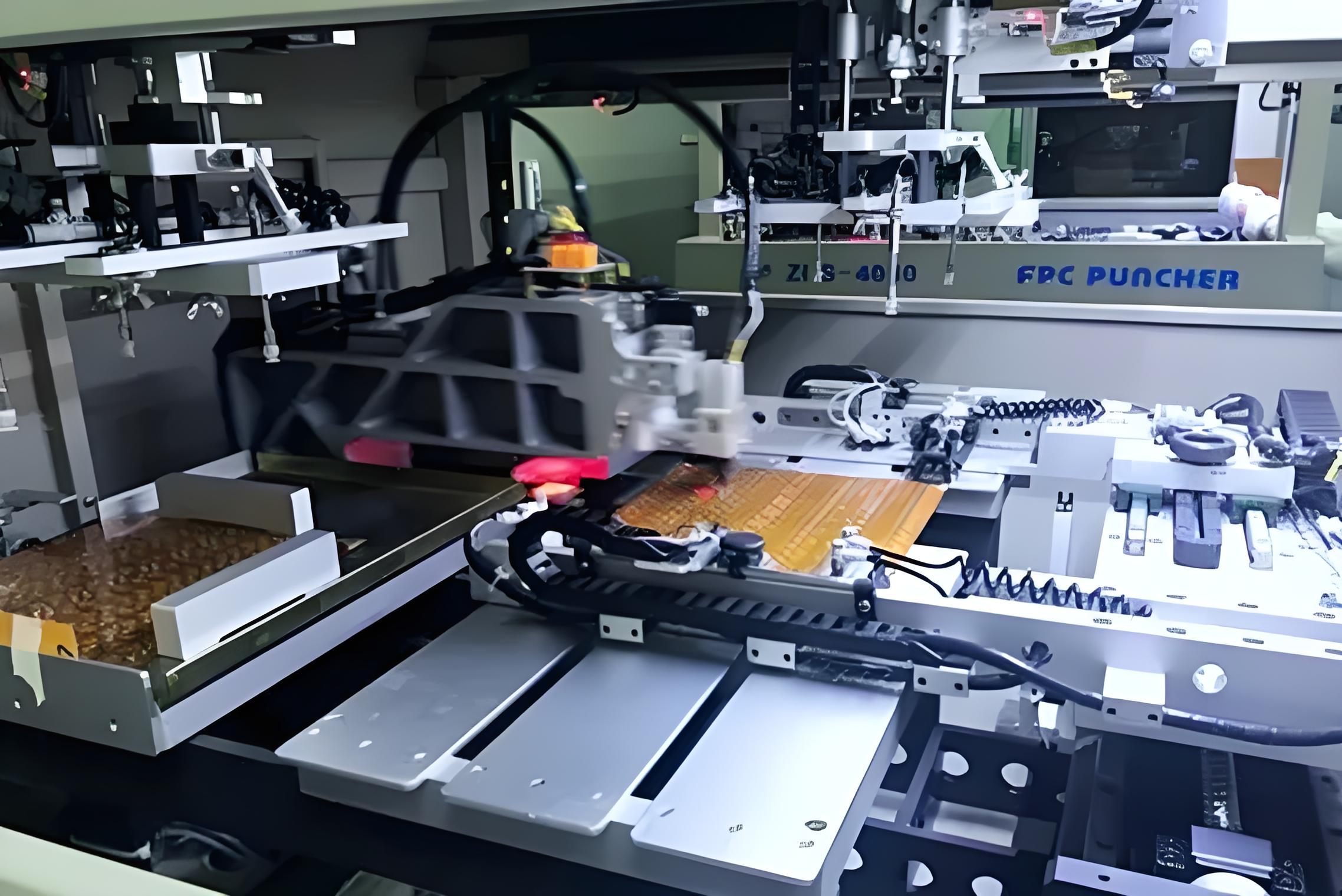

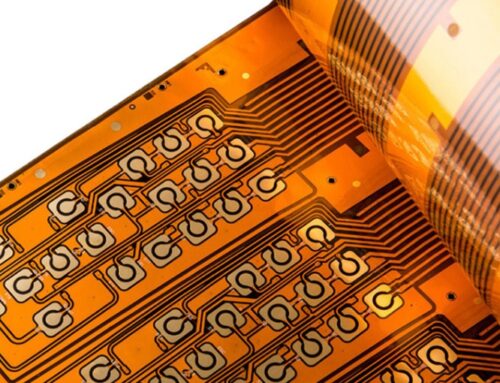
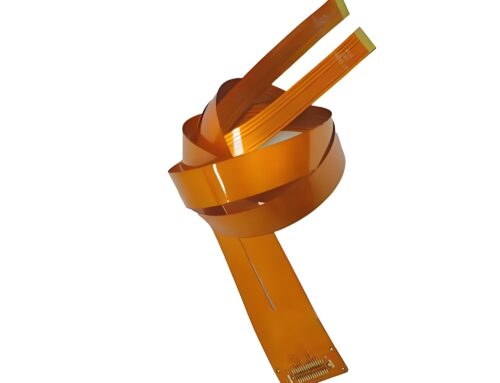



Leave A Comment